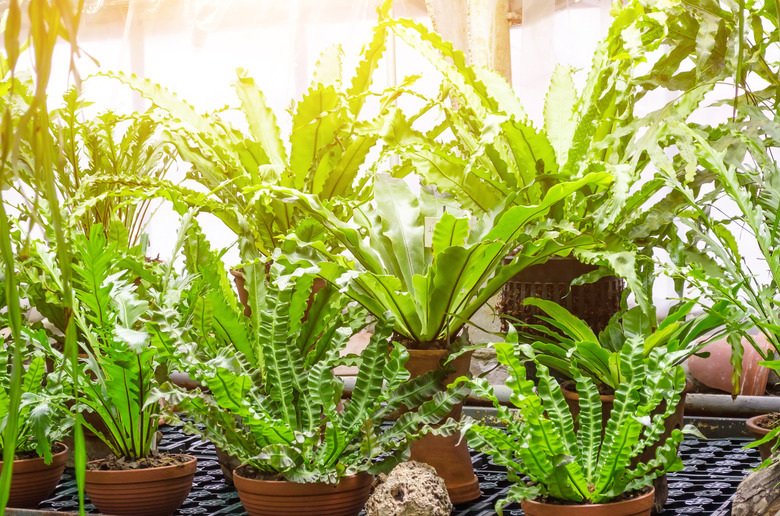The Effect Of Temperature On The Rate Of Photosynthesis
Photosynthesis is one of the most remarkable biochemical processes found on Earth and allows plants to use sunlight to make food from water and carbon dioxide. Simple experiments carried out by scientists shows that the rate of photosynthesis is critically dependent upon variables such as temperature, pH and intensity of light. The photosynthetic rate is usually measured indirectly by detecting the amount of carbon dioxide released by plants.
How Photosynthesis Works
How Photosynthesis Works
Photosynthesis defines the process by which plants and some bacteria manufacture glucose. Scientists summarize the process as follows: using sunlight, carbon dioxide + water = glucose + oxygen. The process occurs within special structures called chloroplasts located in the cells of leaves. Optimum photosynthetic rates lead to the removal of greater amounts of carbon dioxide from the local atmosphere, producing greater amounts of glucose. Since glucose levels within plants are difficult to measure, scientists utilize the amount of carbon dioxide assimilation or its release as a means to measure photosynthetic rates. During the night, for example, or when conditions are not prime, plants release carbon dioxide. Maximum photosynthetic rates vary between plant species, but crops such as maize can achieve carbon dioxide assimilation rates as high as 0.075 ounce per cubic foot per hour, or 100 milligrams per decimeter per hour. To achieve optimum growth of some plants, farmers keep them in greenhouses that regulate conditions such as humidity and temperature. There are three temperature regimes over which the rate of photosynthesis changes.
Low Temperature
Low Temperature
Enzymes are protein molecules used by living organisms to carry out biochemical reactions. The proteins are folded into a very particular shape, and this allows them to bind efficiently to the molecules of interest. At low temperatures, between 32 and 50 degrees Fahrenheit – 0 and 10 degrees Celsius – the enzymes that carry out photosynthesis do not work efficiently, and this decreases the photosynthetic rate. This leads to a decrease in glucose production and will result in stunted growth. For plants inside a greenhouse, the installation of a greenhouse heater and thermostat prevents this from occurring.
Medium Temperatures
Medium Temperatures
At medium temperatures, between 50 and 68 degrees Fahrenheit, or 10 and 20 degrees Celsius, the photosynthetic enzymes work at their optimum levels, so photosynthesis rates gauge high. Depending on the particular plant in question, set the greenhouse thermostat to a temperature within this range for best results. At these optimum temperatures, the limiting factor becomes the diffusion of carbon dioxide into the leaves.
High Temperatures
High Temperatures
At temperatures above 68 degrees Fahrenheit, or 20 degrees Celsius, the rate of photosynthesis decreases because the enzymes do not work as efficiently at this temperature. This is despite the increase of carbon dioxide diffusion into leaves. At a temperature above 104 degrees Fahrenheit – 40 degrees Celsius – the enzymes that carry out photosynthesis lose their shape and functionality, and the photosynthetic rate declines rapidly. The graph of photosynthetic rate versus temperature presents a curved appearance with the peak rate occurring close to room temperature. A greenhouse or garden that provides optimum light and water, but gets too hot, produces less vigorously.
Cite This Article
MLA
Markings, Samuel. "The Effect Of Temperature On The Rate Of Photosynthesis" sciencing.com, https://www.sciencing.com/effect-temperature-rate-photosynthesis-19595/. 9 March 2018.
APA
Markings, Samuel. (2018, March 9). The Effect Of Temperature On The Rate Of Photosynthesis. sciencing.com. Retrieved from https://www.sciencing.com/effect-temperature-rate-photosynthesis-19595/
Chicago
Markings, Samuel. The Effect Of Temperature On The Rate Of Photosynthesis last modified August 30, 2022. https://www.sciencing.com/effect-temperature-rate-photosynthesis-19595/
